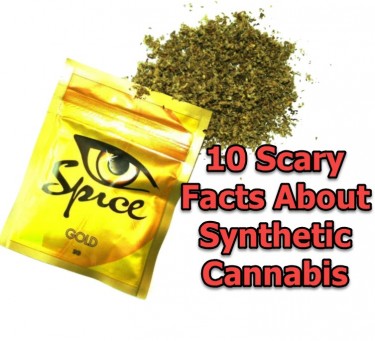
Lab-made cannabinoid users have more severe withdrawal symptoms than natural plant users, says a new study
Spice is a common synthetic cannabis product that has been found to create several challenges in people trying to quit.
Researchers at the University of Bath Addiction and Mental Health Group have studied the withdrawal symptoms seen in patients trying to stop using synthetic cannabinoids. The new study found that these people experience worse withdrawal symptoms than users of regular cannabis. The research was published last month and the challenges these users faced were highlighted. The study focused on synthetic cannabis users who became addicted to the products classified as “Spice”.
Spice up
Spice is a synthetic cannabinoid that is used in place of organic cannabis. The name “Spice” is a non-formal term used to classify drugs that are scientifically known as synthetic cannabinoid receptor agonists. Researchers often abbreviate this term as “SCRAs”.
The drug is designed to mimic the effects of marijuana on the endocannabinoid system (ECS). The cannabinoid compounds were made artificially and then sprayed on plant-based materials that look like marijuana.
Users can easily purchase these drugs. One of its charms is that it is undetectable in drug tests. That means it can be used as a substitute to get high without getting caught. Most of the people who use these products are athletes, prisoners, and even workers in reputable companies. It’s also been found to be stronger than regular cannabis, which is why many become addicted in no time.
Since it was published in the mainstream, scientists have proven these claims through experimentation. They found that users tend to get addicted to spices in less time than it would take to get addicted to cannabis. Further observations have shown that the drug is more harmful than regular marijuana. Because of the intense and severe symptoms experienced during withdrawal, users find it extremely difficult to stop taking.
Redemption of spices
This usually occurs when a regular spice smoker suddenly stops taking the drug. When a drug is no longer used, a number of unpleasant symptoms arise. For some, a slight reduction in regular consumption of spices could trigger these severe symptoms.
Withdrawal symptoms occur when a body system tries to adapt to a drug drought after experiencing the drug’s effects for a very long period of time. These symptoms can last for a few days to a few weeks, or even months, in severe cases.
Most spice users who tried to quit found themselves unable to withstand the adverse symptoms. With synthetic cannabinoids like spices, some users tend to get stuck on the drug forever because not everyone can cope with the intense challenges that arise when drug use is paused or stopped.
The study
The results of this study can be found in the journal Psychopharmacology. The aim of the study was to compare the effects of spice and cannabis withdrawal among the volunteers. The researchers involved in the study are the first to compare the intensity of the spice’s effects with that of marijuana. The lead author and Ph.D. The student Sam Craft on this study received funding from the Medical Research Council.
The experiment was designed to show how much damage either drug can do after prolonged use. The severity of the withdrawal symptoms and how long it took for a test person to develop tolerance and withstand the effects of the drug were measured. The duration of the effects was also measured. Each volunteer was asked about the withdrawal symptoms they experienced after trying to quit.
This study is by far the largest spice withdrawal experiment ever conducted anywhere in the world. It employed a group of cannabis users as well as a sample of people who regularly consume spices. The total number of volunteers registered for the program also included about 280 people who had taken the global drug survey while trying to discontinue synthetic cannabinoids.
monitoring
The volunteers reported that the induced effects of spices didn’t last as long as those of cannabis, although it took less to get high. In addition, participants found that they developed tolerance to synthetic cannabinoids more quickly. This leads to higher doses over shorter periods of time to evoke the same feelings that were observed before tolerance was developed.
About 67% of participants said they had more than three severe symptoms when they tried to stop. Some of these symptoms present themselves as insomnia, depression, irritability, palpitations, fever, etc. Although regular cannabis users experience the same symptoms, their symptoms are not as severe as those of Spice users. The researchers also observed that the participants in the spice sample developed cravings for the drug as soon as they tried to stop.
Mr. Craft stated that spices could well be described as a “harmful drug”. The effects observed show that it is not worth considering as a legal alternative to marijuana. It has widespread worsening effects on people who try to quit. He added that it would be best if synthetic cannabinoids like spices were banned and banned. It should not be used as a substitute for any type of medication as most people experience other problems after taking the medication.
It is worth remembering that in 2011 the Drug Enforcement Agency banned several synthetic cannabinoid compounds, but spice manufacturers simply changed a single composition in its genetic component to keep the drug legal.
diploma
From the observations of the study, Dr. Tom Freeman, director of the Addiction and Mental Health Group at the University of Bath, said the withdrawal symptoms identified require effective treatments in order for patients to successfully stop taking the drug. There is an urgent need for the government, as well as medical institutions, to develop useful treatments that would help resolve the clinical problem. Problems with withdrawal of spices. University of Bath researchers were recently awarded £ 1.3 million for their spice research. The researchers say the money will be used to fund the development of wearable devices that will be able to detect spices in users.
SYNTHETIC CANNABIS, READ MORE …

HOW DO I KNOW REAL CANNABIS FROM SYNTHETIC CANNABIS?
OR..

SYNTHETIC CANNABIS SPICE – WHAT YOU NEED TO KNOW!

Post a comment: